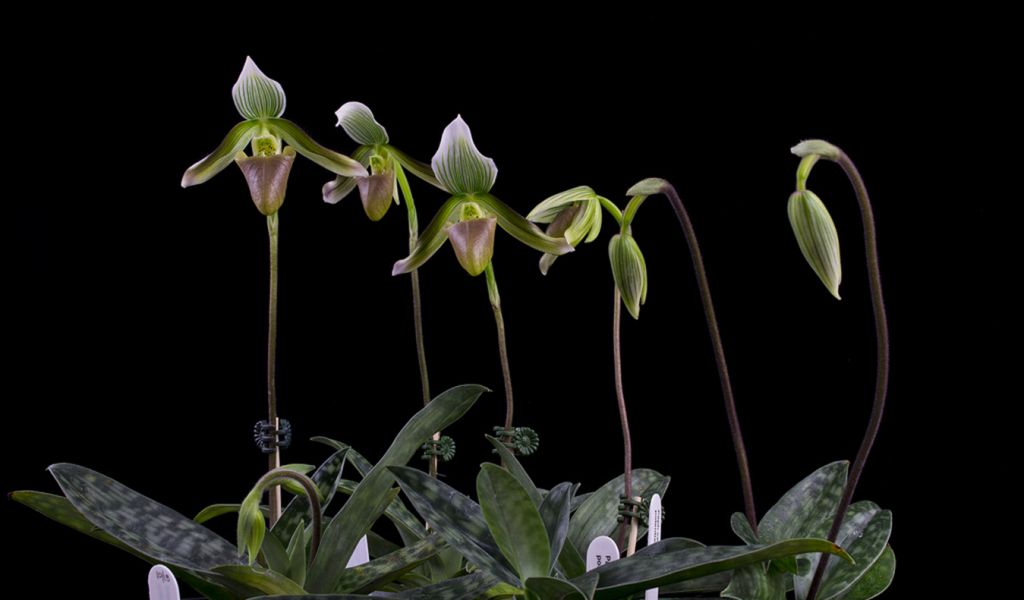ເອື້ອງກະເປົາໃບລາຍຂາວ / Callus Slipper Orchid
APA 6th ed. ເອື້ອງກະເປົາໃບລາຍຂາວ/ Callus Slipper Orchid. (2023, June 13). Retrieved from https://www.phakhaolao.la/kb/0000023
MLA 8th ed. ເອື້ອງກະເປົາໃບລາຍຂາວ/ Callus Slipper Orchid. Pha Khao Lao, 13 June 2023, https://www.phakhaolao.la/kb/0000023.
Chicago 17th ed. Pha Khao Lao. 2023. "ເອື້ອງກະເປົາໃບລາຍຂາວ/ Callus Slipper Orchid." Published June 13, 2023. https://www.phakhaolao.la/kb/0000023.

Paphiopedilum potentianum O.Gruss & Roeth
Lao Local: Bai Lai Daeng
Thai: Maeng phu,ueang khang kop, rongthao nari, rongthao nang, ueang khangkhok
Neither of these species have been satisfactory identified yet. Bai lai khao has 10-20 x 3-5 cm oblong leaves that are thick and hairy, with a sponge-like texture. Their upper blades are light green while the lower-surface is dark green with lighter spots. The plant’s solitary flower is erect, purple with green lines, 10-20 cm tall, and hairy. Its fibrous roots are 10-20 cm long. Bai lai daeng is similar but the surface of its upper leaf blade is dark green with lighter spots while the lower blade is dark purple-green. Its flowers grow in clusters of one to three, and are yellow with purple dots. These terrestrial sympodial orchids are collected for their ornamental and medicinal value, and are believed to help reduce aging. The leaves are blended in water which is then drunk, mainly by women who have recently given birth. Plants are dug out or their rhizomes pulled from the ground. About 1-2 kg per person per day can be collected through journeys of 4-6 km into the forest. The flowers are found in low light intensity habitat on leaf litter and on mossy rocks near streams. Both species range across Southeast Asia and are mainly found in evergreen and deciduous forests in mountainous areas on moist clay sandy or sandy soils. Reproduction in the forest is limited as the whole plant is collected. Plants need to be dried to maintain medicinal qualities.
Bai lai khao and daeng are often exported to Thailand, for $5 kg-$10 per kg. Export to China and Taiwan is also growing. Propagation by division is mainly by rhizomes collected from the forest, The leaves are blended in water which is then drunk, mainly by women who have recently given birth. Plants are dug out or their rhizomes pulled from the ground. About 1 kg-2 kg per person per day can be collected through journeys of 4 km-6 km into the forest. The flowers are found in low light intensity habitat on leaf litter and on mossy rocks near streams.
